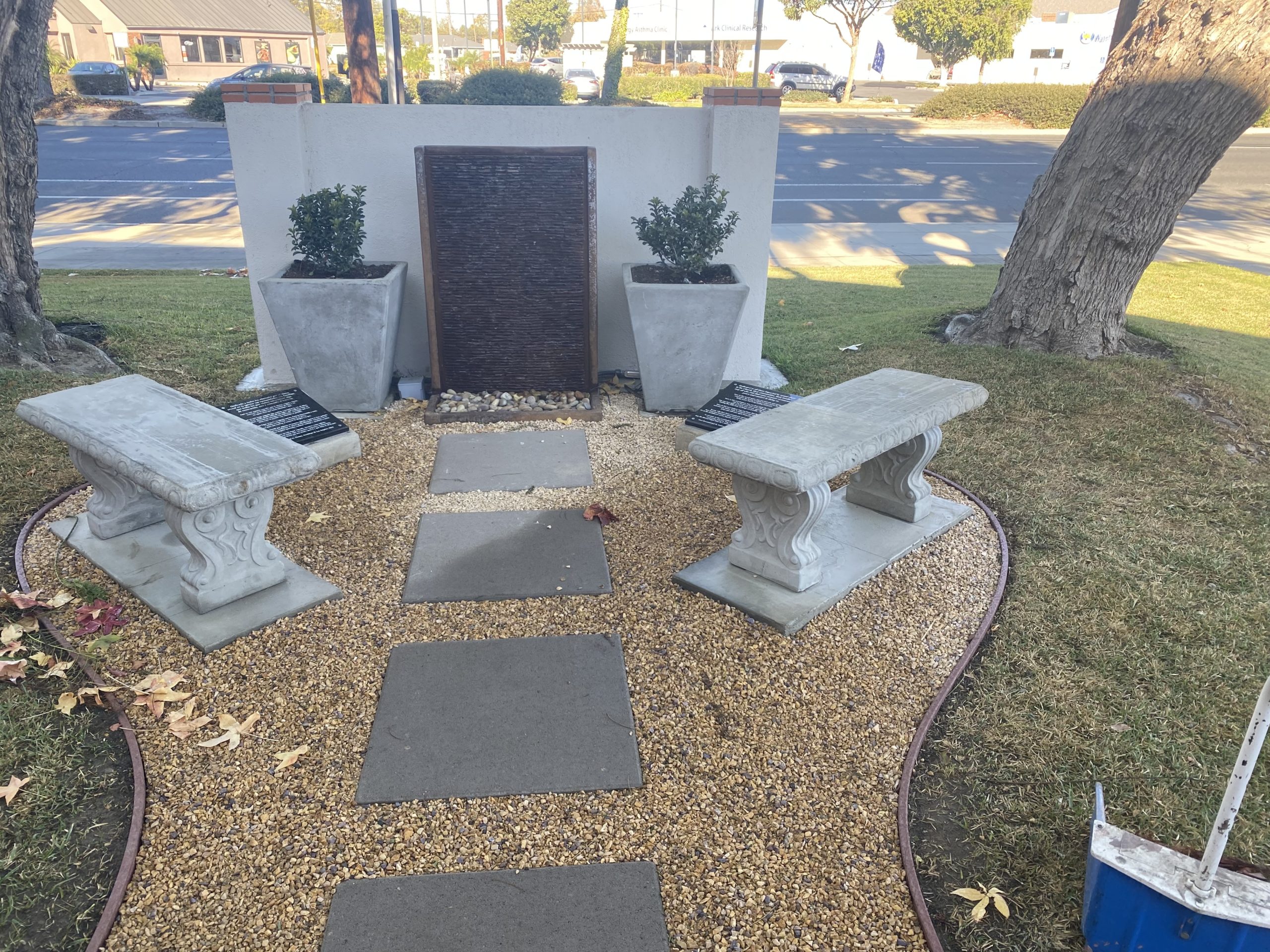Hope.
That’s the word that was on everyone’s lips — from the bishop’s homily to speeches outside the church — during a special Mass and dedication ceremony blessing the new healing garden introduced at Our Lady of Refuge Church in Long Beach on Nov. 17.
The Mass and garden were devoted to those who have suffered any kind of abuse, but especially ones that occurred within the Catholic Church.
Auxiliary Bishop Marc Trudeau said that while trauma occurs in the world — including sexual abuse — the goal of everyone’s journey is heaven, and God is there by our side every step of the way, no matter how painful.
“The remedy is hope,” Trudeau said in his homily.
“It’s my job to inspire some hope,” said Dr. Heather Banis, coordinator for the archdiocese’s Victims Assistance Ministry. “I think for a lot of people who were harmed, there’s a sense that they’re not worthy. Even though we know where we’re going, they don’t feel worthy and they fall away. They lose their way.
“We have to remind them of where they’re going and the gardens are a tangible, physical way to help them.”
The garden at Our Lady of Refuge Church was the final of a series of healing gardens installed in the Archdiocese of Los Angeles, five in total, one in each of the pastoral regions. The other four healing gardens are located at Our Lady of the Assumption Church in Ventura (Santa Barbara region), St. Francis de Sales Church in Sherman Oaks (San Fernando region), St. Bernadette Church in Los Angeles (Our Lady of the Angels region), and St. Camillus Center for Spiritual Care in East LA (San Gabriel region).

The latest garden in the San Pedro region was dedicated the day before the United Nations’ World Day for the Prevention of and Healing from Child Sexual Exploitation, Abuse and Violence on Nov. 18.
The dedication of the final garden also comes weeks after the archdiocese announced plans for a $880 million settlement to resolve hundreds of decades-old claims of childhood sexual abuse.
Banis said she prays that the gardens can bring about something that the financial settlement might not: healing.
“There’s an element of justice that I think is important for those who were harmed,” Banis said. “And as a Church, we should be on the side of justice. My experience tells me that while the money can be helpful, the healing doesn’t come from the money.
“However the money gets used by those who were harmed, I hope it transforms something for them that enables them to continue to heal.”
For Joe Montanez, a victim-survivor of sexual abuse who was the catalyst for the creation of the healing gardens, it still comes back to the search for hope. He believes the gardens can be a small sliver of hope for victims of abuse like him.
“That’s been my journey, it’s been based on hope,” Montanez said to those gathered. “I want you to come and pray in this garden for all the people out there who are hurting. For those who killed themselves because of the abuse. For those that are addicted to drugs, to alcohol.
“There are a lot of us that are out there who are hurting. They need help.”
Montanez said a priest abused him while he was an altar boy at St. Raphael Church in Santa Barbara. He kept the abuse to himself, not wanting to destroy his parents’ faith. He grew up to be a teacher specializing in horticulture and landscape design.
When he finally did reach out to the archdiocese and Banis to finally open up and seek help, he turned his pain into a journey of helping others who were abused.
Using his landscape design expertise, he helped come up with the designs for all five healing gardens.
With the final healing garden completed, this chapter has ended, but Montanez’s book is far from over.
He said he’s working to complete a healing garden at his childhood parish where his abuse occurred, St. Raphael Church in Santa Barbara. Although not designated as one of the five official archdiocesan healing gardens, supporters of the project have banded together to raise money and construct it. Old Mission Santa Inés in Solvang did the same earlier this year.
What’s more, Montanez was contacted to serve on the committee for a national healing garden to be unveiled in Washington, D.C.
Banis said none of this was in the original plan and that these new projects are the result of Montanez’s perseverance and the momentum to right the wrongs of abuse.
“It’s such a statement that our Church is both acknowledging the harm that was done, but also the need in the Church for healing from abuse of all kinds,” she said.
Following the Mass at Our Lady of Refuge, parishioners walked out to the site of the new healing garden. Words of hope were offered. People prayed. Bishop Trudeau blessed the space with holy water.
As Montanez thanked people for coming, he reiterated that this was not the end of something for him, but a continuing quest.
“I’m not going anywhere,” Montanez said. “I will continue to fight for the survivors.”

